You can use the Replace command in Word 2013 to replace text and apply formatting or to replace one type of formatting with another. Suppose that you want to replace all instances of underlined text with italic. By replacing underline with italic, you're searching for one text format and replacing it with another; you're not even searching for text. Do this:
Press Ctrl+H to summon the Find and Replace dialog box.
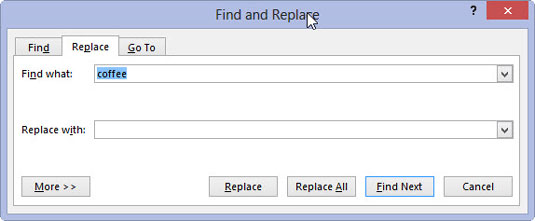
The Find and Replace dialog box appears.
Click the mouse in the Find What text box and press the Delete key.
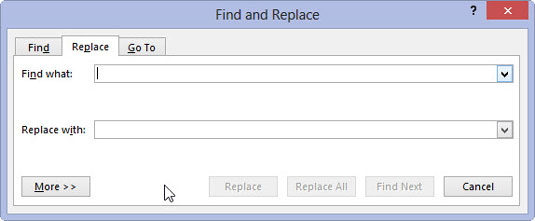
All text must be removed from the Find What text box.
Click the More button, if necessary, to display the full dialog box.
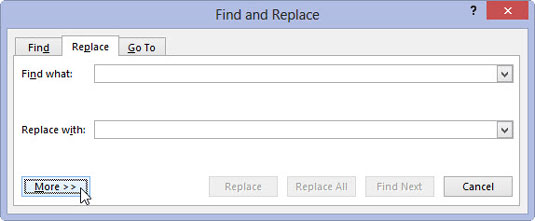
You may or may not need to display the full box.
Click the Format button and choose Font from the pop-up menu that appears.
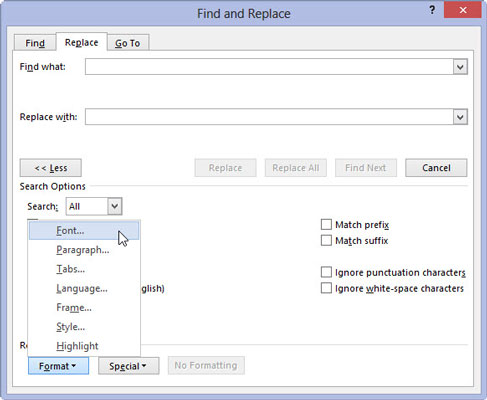
The Find Font dialog box appears.
In the Find Font dialog box, choose the single underline graphic from the Underline style drop-down list, and then click the OK button.
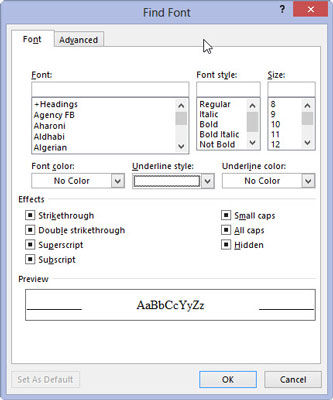
Back in the Find and Replace dialog box, the text Format: Underline appears below the Find What box.
Click the Replace With text box and press Backspace to delete that text.

Any text in the Replace With text box must be erased.
Choose Font from the Format button's pop-up list.
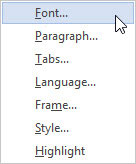
Choose a font from the options listed.
In the Replace Font dialog box, choose (None) as the underline style.
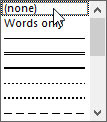
This step is necessary because, otherwise, Word wouldn’t remove the first style; it would merely add to that style. Likewise, text attributes such as Not Bold and Not Italic are found in the Replace Font dialog box.
Choose Italic from the Font Style list, and then click OK to close the Replace Font dialog box.
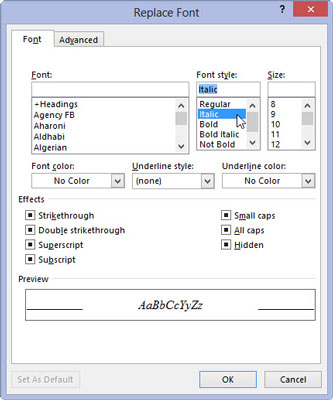
Below the Replace With box, it should say Format: Font: Italic, No underline. That means Word will search for underlined text and replace it with italic text and remove the underline.
Click the Replace All button.
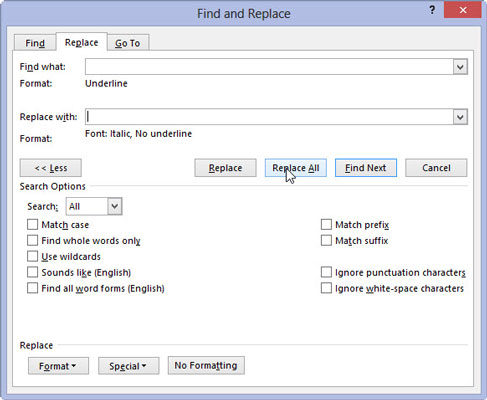
Word scours your document and replaces any underlined text with italic.
Click OK when the find-and-replace is done.
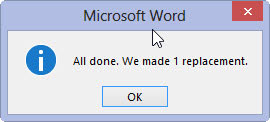
As long as you set things up carefully, searching and replacing text formatting is a quick and easy way to spiff up a boring document.
To replace one format with another, such as underline with italic, be sure to leave the Find What and Replace With text boxes empty. That way, only the text formatting is replaced.
An easier way to update formatting in a document is to use and apply styles.
Don’t forget about the No Formatting button! You need to click it if you want to change the formats or replace text without paying attention to formats.






